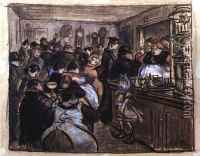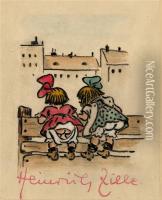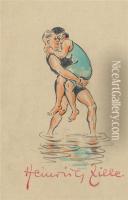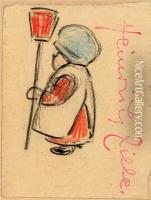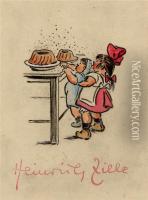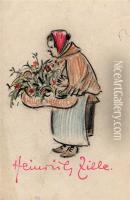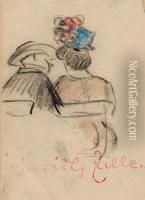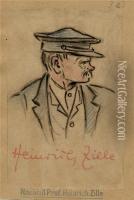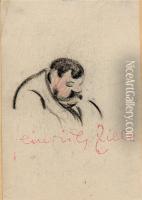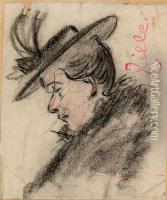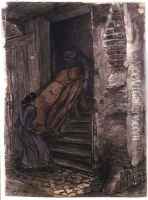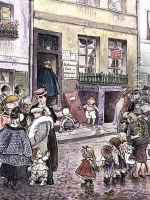Heinrich Zille Paintings
Heinrich Zille, born Rudolph Heinrich Zille on January 10, 1858, in Radeburg, Saxony, was a German graphic artist and photographer renowned for his depiction of Berlin life during the late 19th and early 20th centuries. Zille grew up in a working-class environment, which deeply influenced his future work. He moved to Berlin with his family when he was nine, and the city became the central subject of his art.
Zille's early career was not directly related to art; he worked in a factory while taking evening classes at the Royal School of Art. Despite the lack of formal daytime art education, he developed his artistic skills and began working as a lithographer, which eventually led to his breakthrough as an illustrator and caricaturist for various magazines, including the satirical publication 'Simplicissimus'.
Zille's work primarily focused on the lives of the poor and the working class in Berlin's tenements and backstreets. His drawings and photographs candidly captured the struggles, humor, and the darker sides of urban life. He had a keen eye for the everyday activities and the resilience of the underprivileged, often depicting crowded living conditions, street children at play, and the camaraderie among the impoverished.
He was also known for his satirical edge, using his art to critique social issues of the time, such as the wide gap between the rich and the poor, the treatment of women and children, and the effects of industrialization on society. His work provided a valuable historical record of the period's social conditions.
Zille became a member of the Berlin Secession, a group of artists who sought to break away from the traditional academic style of art. His popularity grew, and he gained recognition among the art community and the public. In 1924, he was made an honorary member of the Prussian Academy of Arts.
Heinrich Zille passed away on August 9, 1929, in Berlin. Although he is not as well-known internationally as some of his contemporaries, Zille left a significant legacy in Germany. His compassionate portrayal of the struggles and joys of everyday life offers a unique window into the social history of Berlin during his lifetime. His work continues to be celebrated in Germany, where he is considered a key chronicler of the city's history through his art.
